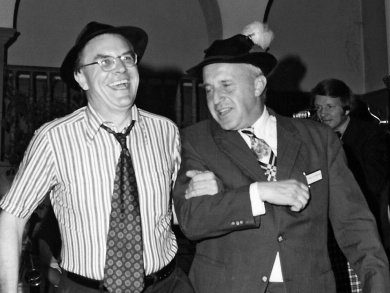The first reports of the compound now known as ferrocene were published just over 60 years ago, and an Essay by Helmut Werner, Julius Maximilians University Würzburg, Germany, in Angewandte Chemie outlines the discovery of sandwich complexes.
Ferrocene was initially produced as an unexpected by-product in reactions involving cyclopentadiene. The structure of ferrocene was fiercely debated; it was initially thought to be linear with the iron atom bridging the two aromatic groups. However, the high stability of ferrocene implied that the iron center should possess 18 π electrons and thus the 6 π electrons of each cyclopentadienyl ligand bond to the iron. In subsequent years, Ernst Otto Fischer, Technical University of Munich, Germany, and Geoffrey Wilkinson, Imperial College London, UK, independently postulated the sandwich structure of ferrocene, which was confirmed by magnetic, IR, and X-ray data.
The aromatic character of ferrocene was confirmed by Wilkinson and R. B. Woodward, Massachusetts Institute of Technology (MIT), USA, who successfully carried out a Friedel-Crafts acetylation on the complex. Fischer and Wilkinson embarked on pioneering work in the field of transition metal arene complexes and were awarded the Nobel Prize in Chemistry in 1973. The two competing chemists were reconciled in the years thereafter (see picture).
- At Least 60 Years of Ferrocene: The Discovery and Rediscovery of the Sandwich Complexes,
Helmut Werner,
Angew. Chem. Int. Ed. 2012, 51(25), 6052–6058.
DOI: 10.1002/anie.201201598 - Angew. Chem. 2012, 124(25), 6156–6162.
DOI: 10.1002/ange.201201598




